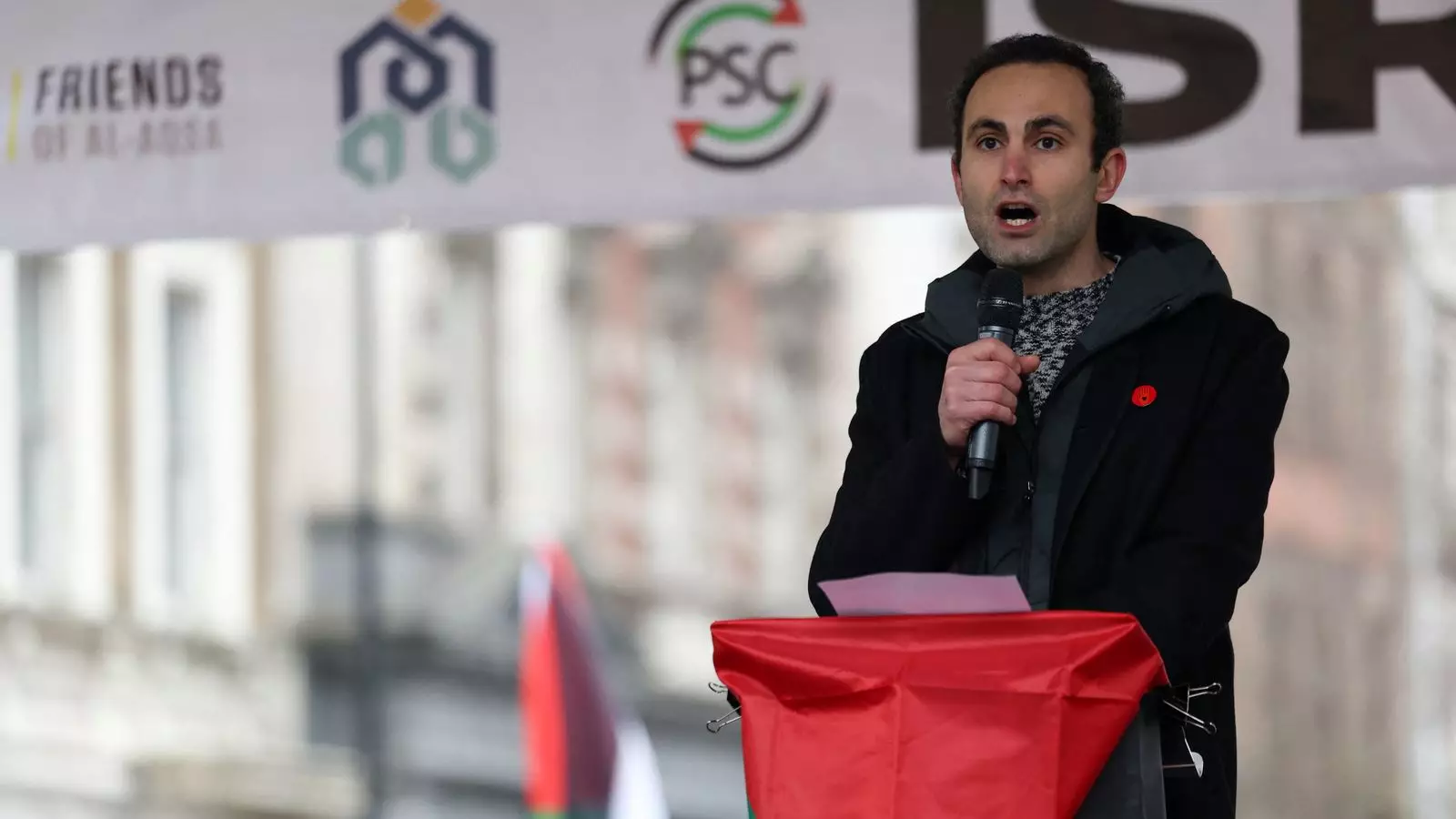The recent news surrounding Khalid Abdalla, the actor from *The Crown*, serves as a stark reminder that the right to protest—a fundamental cornerstone of democracy—is increasingly coming under scrutiny. Abdalla’s summons to attend a police interview regarding a pro-Palestinian protest raises alarming questions about governmental overreach and the silencing of dissenting voices. The very essence of a democratic society lies in the ability of its citizens to express their viewpoints, especially on contentious issues. Abdalla’s predicament underscores a burgeoning pattern where authorities seem to want to intimidate or marginalize those who participate in protests that deviate from mainstream narratives.
Abdalla’s post, which indicates that other notable figures, including an 87-year-old Holocaust survivor, received similar letters from the Metropolitan Police, only amplifies these concerns. If the voices of both a well-known actor and a historic survivor are both targeted, we might be witnessing a shift toward a chilling atmosphere where expressiveness is not just discouraged but actively penalized. In this context, it becomes crucial to reassess the line between legitimate law enforcement and oppressive governmental practices.
The Metropolitan Police’s justification for these interviews revolves around the enforcement of the Public Order Act. Proponents of this legislation will argue that it is vital for maintaining public safety; however, this often opens avenues for abuses in its application. The events of January 18th, which Abdalla and others participated in, raise fundamental questions about how ‘public order’ is defined. When does regulation transform into suppression? The police stance that demonstrators breached public order conditions merits scrutiny, especially as it touches on the capacity for peaceful assembly.
Moreover, the tightrope that activists walk is further exacerbated by the often subjective interpretation of what constitutes “breaching” these conditions. The possibility that individuals may be questioned or even prosecuted for exercising their rights to protest is troubling and inherently counterproductive to societal progress.
Khalid Abdalla’s decision to engage in activism has significant implications, as it illustrates how the spotlight of public attention can both empower and endanger. Dueling narratives of a celebrity leveraging their public platform against institutional power challenge the very fabric of activism. It emphasizes the transformative potential of public figures while also illuminating the risks involved when those figures step beyond the traditional bounds of their roles.
The backlash experienced by those like Abdalla and Jeremy Corbyn, who took part in the January protests, reflects the contentious intersection of politics and celebrity culture. While these figures can spur a wider conversation, they also quickly become targets for backlash from opposing narratives, highlighting the deep rifts in society regarding the Israeli-Palestinian conflict.
It is equally essential to consider how social media plays a crucial role in both activism and the state’s response to it. Abdalla, like many modern activists, has utilized platforms such as Instagram to amplify his message, calling for Western nations to reconsider their support for Israel. However, this public visibility also renders activists susceptible to intimidation, as seen by the police’s swift action following the protest.
In many ways, social media serves as a double-edged sword for activists. It democratizes information dissemination, allowing marginalized voices to unite and exert influence over major political dialogues. Yet, it also offers state entities a direct line to monitor and respond to dissent. As governmental actions increasingly target public opinion molded in digital forums, the balance of power grows ever skewed, leading to heightened scrutiny of the very individuals striving for change.
The Intersection of Art and Activism
As an artist, Abdalla’s dilemma sheds light on the intrinsic tension between art and activism. Artists have long used their platforms to highlight social injustices—should they be silenced in their fight against systemic inequities? The intertwining of creativity and political dissent is vital for cultural progression, yet the risk of reprisal looms large.
Abdalla’s case also compels us to examine the broader societal implications. The erosion of the right to protest represents a regression not only in individual freedoms but also in the vibrancy of public discourse. Furthermore, it emphasizes the necessity of solidarity among those who share a commitment to advocate for justice. Abdalla’s situation may just be a poignant example of resistance against forces seeking to uphold the status quo, but it could also signify a bleak future for artistic expression intertwined with activism.

